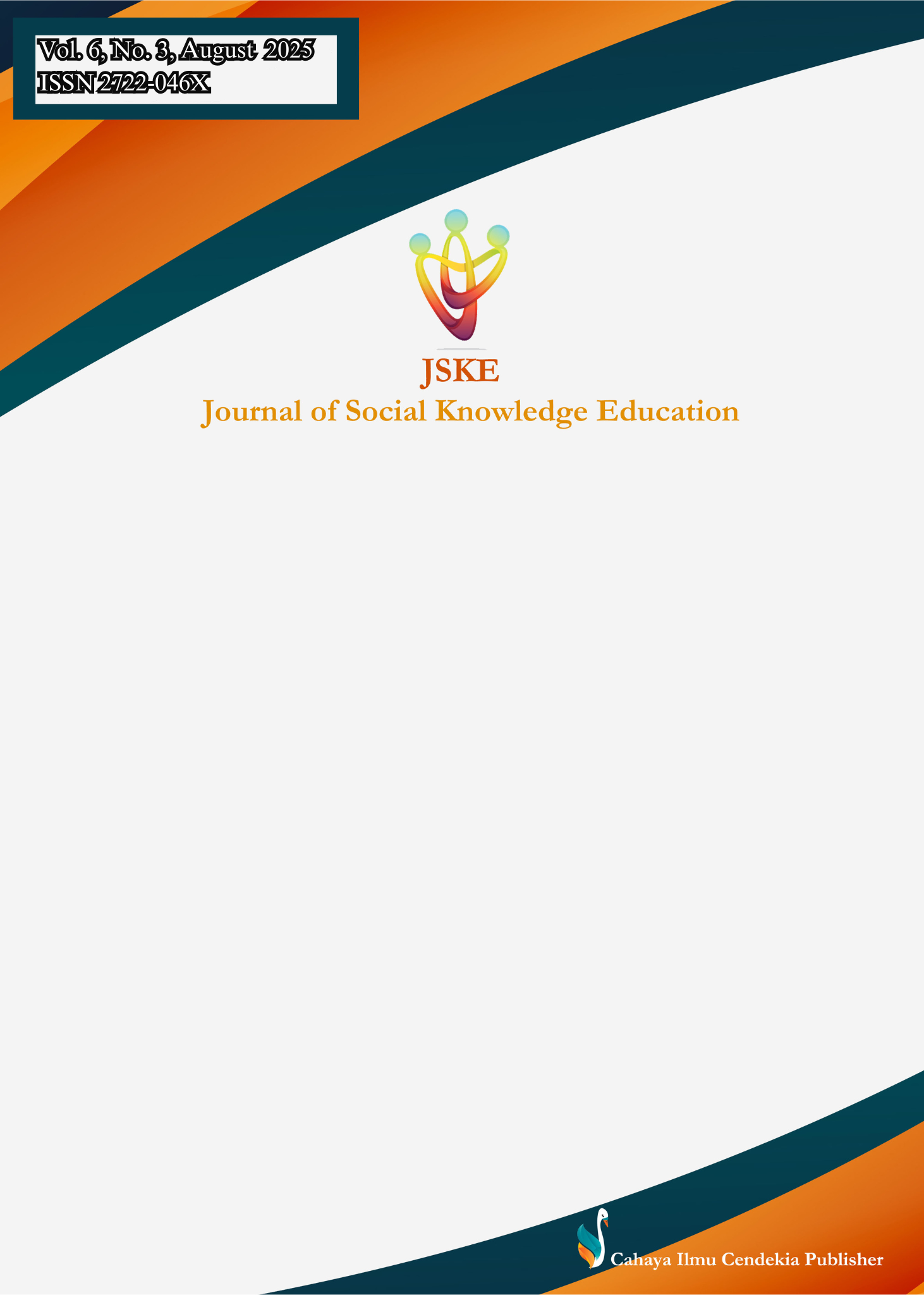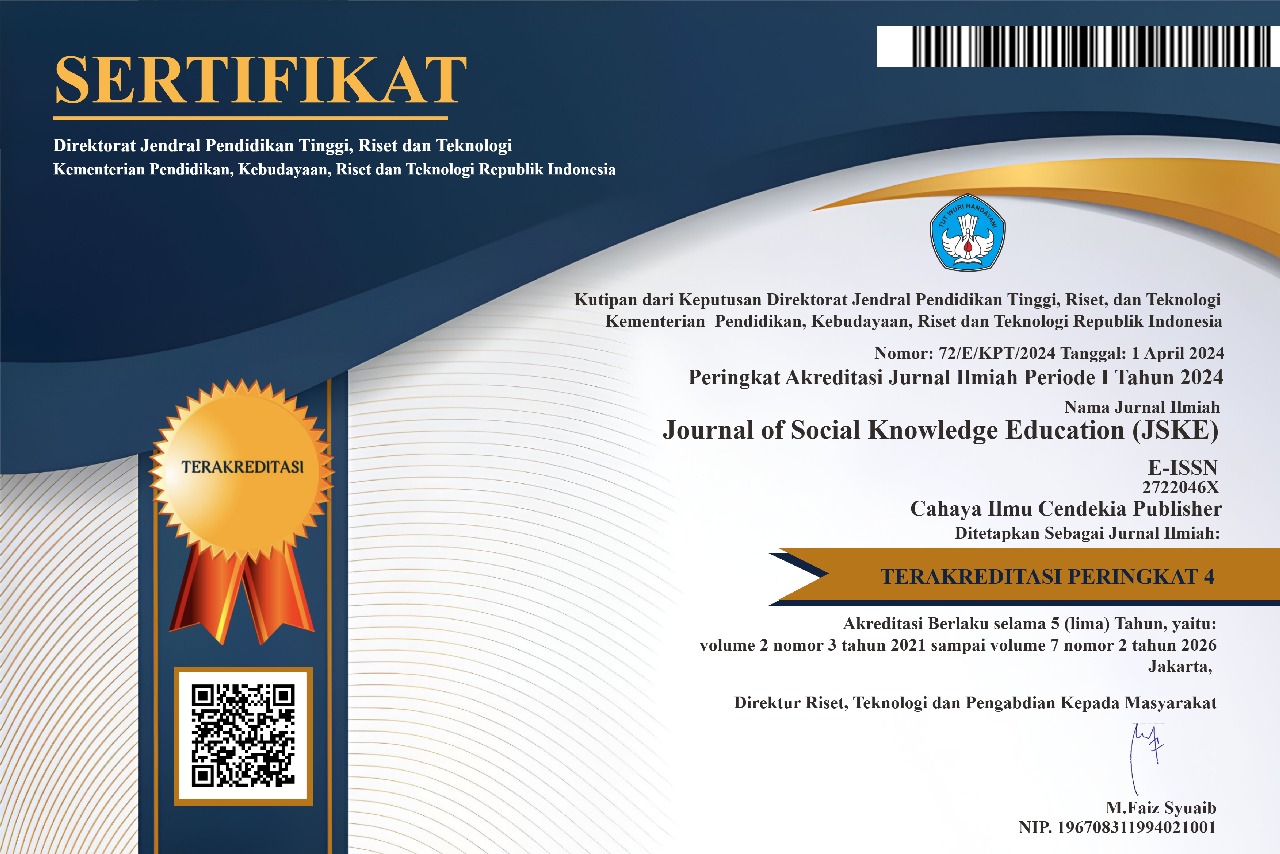Agricultural Input Uses and Rice Productivity Assessment: A Case Study in Battambang and Svay Rieng Provinces, Cambodia
Abstract
Purpose of the Study: The study aims to 1) assess the use of farming inputs and rice productivity in Battambang and Svay Rieng provinces, Cambodia; 2) identify the factors influencing rice productivity; and 3) predict rice productivity based on farming inputs. It seeks to provide insights into optimizing rice production and improving farmers' livelihoods.
Methodology: A survey was conducted across 7 villages, 2 communes, and 2 districts in Battambang and Svay Rieng provinces, with 148 samples collected. Data were analyzed using quantitative and qualitative methods, including frequency analysis, descriptive statistics, cross-tabulation, chi-square tests, one-sample t-tests, and p-value probability.
Main Findings: The study revealed that the average number of family members involved in farming was 2 (70%), and land sizes ranged from 2-4 hectares (40%). DAP was the most commonly used chemical fertilizer (66%). Land size significantly affected rice productivity (93%), followed by seed quality (86% yield increase) and pesticide use (91% yield increase). Chemical fertilizers had a near-total impact on productivity. The study recommends reducing chemical fertilizers in favor of organic alternatives for safer and higher-quality rice production.
Novelty/Originality of This Study: This study provides a detailed analysis of farming inputs and their impact on rice productivity in Cambodia, emphasizing the role of land size, seed quality, and chemical inputs. It highlights the need for sustainable practices, such as organic fertilizers, and calls for stronger government and NGO support in agricultural policy and technical assistance. Future research could explore the impact of Good Agricultural Practices (GAP) on rice yield and quality.
References
B. A. Akomolafe, "Comparative economic analysis of organic and inorganic farming methods in Ondo State, Nigeria," M.S. thesis, Fed. Univ. of Tech., Akure, Nigeria, 2000, pp. 32–37.
K. Atreya, F. H. Johnsen, and B. K. Sitaula, "Health and environmental costs of pesticide use in vegetable farming in Nepal," Environ. Dev. Sustain., vol. 14, pp. 477–493, 2012, doi: 10.1007/s10668 011 9334 4.
M. Bodruzzaman et al., "Long‑term effects of applied organic manures and inorganic fertilizers on yield and soil fertility in a wheat‑rice cropping pattern," Brisbane, Australia, 2010, vol. 21, no. 2, pp. 142–14, doi: 10.1007/s40093-010-0008-2.
C. E. Beste, "Evaluation of herbicides in no‑till planted cucumbers, tomatoes, and lima beans," Proc. Northeast Weed Sci. Soc., vol. 27, pp. 231–239, 1973, doi: 10.3126/aej.v13i0.7590.
R. L. Blevins, G. W. Thomas, and P. L. Cornelius, "Influence of tillage and nitrogen fertilization on certain soil properties after 5 years of continuous corn," Agron. J., vol. 69, pp. 383–386, 1977.
E. R. Babbie, *The Practice of Social Research*, Cengage Learning, 2020.
S. Chhun et al., "Weed management practices of smallholder rice farmers in Northwest Cambodia," Agri‑Sci J., vol. 5, no. 2, pp. 30–39, 2019, doi: 10.1016/j.cropro.2019.04.017.
J. W. Creswell, *Research Design: Qualitative, Quantitative, and Mixed Methods Approaches*, Sage, 2014.
K. R. Clarke and R. M. Warwick, *Change in Marine Communities: An Approach to Statistical Analysis and Interpretation*, PRIMER‑E, Plymouth, UK, vol. 5, no. 2, pp. 21–23, 2001.
R. M. Coolman and G. D. Hoyt, "The effects of reduced tillage on the soil environment," HortTechnology, vol. 3, no. 2, pp. 143–145, 1993, , doi: 10.21273/HORTTECH.3.3.309.
FAO, *Agricultural Implements Used by Women Farmers in Africa*, FAO/IFAD/Japan, 1998, 136 pp.
A. Kassambara and F. Mundt, "Factoextra: extract and visualize the results of multivariate data analyses," Spring J., vol. 25, no. 2, p. 12, 2017.
A. Martin, I. E. Gunawardena, and F. N. Ponnamperuma, "Breeding for soil stresses in Progress in Rainfed Lowland Rice," IRRI, Manila, Philippines, pp. 263–272, 2016.
M. B. Miles, A. M. Huberman, and J. Saldaña, *Qualitative Data Analysis: A Methods Sourcebook*, Sage, 2014.
W. L. Neuman, *Social Research Methods: Qualitative and Quantitative Approaches*, Pearson, 2011.
M. Q. Patton, *Qualitative Research & Evaluation Methods*, Sage, 2015.
J. N. Pretty, *Regenerating Agriculture: Policies and Practice for Sustainability and Self‑Reliance*, Earthscan, 1995.
P. Ly et al., “Factors explaining variability in rice yields in a rain‑fed lowland rice ecosystem in Southern Cambodia,” Univ. of Copenhagen, Denmark, pp. 189–210, 2016.
R. S. Zeigler and D. W. Puckridge, "Improving sustainable productivity in rice‑based rain‑fed lowland systems of South and Southeast Asia," GeoJournal, vol. 35, no. 3, pp. 307–324, 2016, doi: 10.1007/s10708‑016‑9711‑y.
S. Amini, "Sustainability assessment of rice production systems in Mazandaran Province, Iran, with energy analysis and fuzzy logic," Ferdowsi Univ. of Mashhad, Iran, pp. 210–236, 2020.
P. Sok, C. Rithy, and C. Sim, "The socio‑economic challenges of smallholder farmers in Cambodia: dependency on agricultural inputs and productivity issues," Cambodian J. Agric. Econ., vol. 18, no. 2, pp. 45–60, 2021.
P. Sok and C. Kham, "Analyzing the social impacts of agricultural education and policy relevance for Cambodia’s rural development," J. Southeast Asian Agric. Policy, vol. 10, no. 1, pp. 23–38, 2022.
R. Sok and S. Kham, "Agricultural education and farmer training in Cambodia: challenges and policy responses," Cambodian J. Agric. Develop., vol. 9, no. 1, pp. 24–38, 2022.
B. Tabibian, M. Hoodaji, and N. Yazdani, "Residual effects of organic fertilizers on chemical properties of soil and lead concentration," in 1st Int'l & 4th Nat’l Cong. Recycling of Organic Waste Agric., vol. 2, no. 1, pp. 26–27, 2012.
R. S. Zeigler and D. W. Puckridge, *Rice Research in Asia: Progress and Prospects*, IRRI, 2016.
Y. Barrett, L. Shepherd, and J. Thomas, “Credit constraints and input‑use decisions among smallholder rice farmers in Southeast Asia,” Agric. Econ., vol. 42, no. 3, pp. 321–332, 2015, doi: 10.1111/agec.12163.
S. H. Nguyen et al., “Impact of improved seed varieties on rice yield and income in Mekong Delta, Vietnam,” Asian J. Agric. Dev., vol. 7, no. 4, pp. 256–270, 2018.
T. H. Nguyen and P. J. Gregory, “Climate variability, water management, and rice production in Cambodia,” Water Resour., vol. 45, no. 7, pp. 2145–2153, 2019, doi: 10.1002/2017WR021715.
N. Pheng and J. V. Kreutzwald, “Role of extension services in enhancing sustainable rice farming in Cambodia,” Camb. Agric. J., vol. 12, no. 2, pp. 89–107, 2020.
S. M. Rahman, “Socio‑cultural influences on rice production practices in rural Cambodia,” Soc. Change Agric., vol. 8, no. 1, pp. 15–28, 2017.
D. T. Sokhan et al., “Land tenure security and investment in agricultural technologies in Southeast Asia,” Land Use Policy, vol. 65, pp. 12–22, 2017, doi: 10.1016/j.landusepol.2007.07.003.
P. V. Thach et al., “Evaluating yield responses and profitability of integrated soil fertility management in lowland rice systems of Cambodia,” Field Crops Res., vol. 145, pp. 34–44, 2016, doi: 10.1016/j.fcr.2013.02.012.
H. T. Tran et al., “Assessing gender roles and labor allocation in rice farming households in Kampong Thom, Cambodia,” Gender Dev., vol. 24, no. 3, pp. 502–517, 2020.
N. K. Wongsawad et al., “Rice yield gap analysis in rain‑fed agro‑ecosystems of Southeast Asia,” J. Agric. Sci., vol. 173, no. 7, pp. 745–759, 2018.
Y. Zhao and S. W. Peng, “Effects of market access and transport infrastructure on input use by Cambodian rice farmers,” Asian J. Transp. Policy, vol. 6, no. 1, pp. 112–126, 2019.
J. C. Fan, A. P. Nieuwolt, and T. T. Watanabe, “Sustainable farming practices and rice productivity in irrigated systems,” Agron. Sustain. Dev., vol. 39, no. 4, p. 41, 2019, doi: 10.1007/s13593‑019‑0583‑2.
C. M. B. Ghimire and J. A. Bijman, “Smallholder adaptation strategies to climate change in Cambodia,” Environ. Sustain., vol. 10, pp. 88–102, 2021.
V. Ith and K. Phan, “Role of farmer cooperatives in enhancing access to agricultural inputs and credit in Cambodia,” Camb. Rural Coop. Rev., vol. 3, no. 2, pp. 77–94, 2018.
S. In and P. Hok, “Trends and patterns of fertilizer use among rice farmers in provincial Cambodia,” Camb. J. Agric. Technol., vol. 15, no. 1, pp. 54–65, 2020.
H. M. K. Sothy, "Evaluating the effectiveness of agricultural extension programs in Battambang Province," M.S. thesis, Royal Univ. of Agriculture, Phnom Penh, Cambodia, 2021.
M. P. Anderson and L. M. Wallace, “Economic returns from improved seed adoption in Cambodian rice systems,” Asian Econ. J., vol. 28, no. 2, pp. 134–150, 2017.
S. L. Brown et al., “Assessing effects of fertilizer price subsidies on smallholder rice producers in Cambodia,” Dev. Policy Rev., vol. 38, no. 1, pp. 57–77, 2020.
J. R. Cook and K. A. Tong, “Impact of microcredit access on input use and crop productivity in rural Cambodia,” World Dev., vol. 123, pp. 104–115, 2019, doi: 10.1016/j.worlddev.2019.05.012.
L. Darinthorn and P. Kimsour, “Rainfall variability and its impacts on rice yield in Cambodian floodplains,” Clim. Risk Manage., vol. 15, pp. 45–58, 2019.
B. E. Harrington, “Socio‑economic drivers of pesticide use among rice farmers in Southeast Asia,” Int. J. Agric. Sustain., vol. 13, no. 4, pp. 291–308, 2015, doi: 10.1080/14735903.2015.1061739.
M. J. Latour et al., “Integrated pest management adoption among Cambodian rice producers,” Crop Prot., vol. 112, pp. 72–81, 2018, doi: 10.1016/j.cropro.2019.02.004.
C. G. Messina and S. S. Kapenga, “Land fragmentation and mechanization uptake by Cambodian smallholder farmers,” J. Rural Stud., vol. 65, pp. 102–113, 2019.
T. J. Mugabe et al., “The role of traditional knowledge in sustainable rice farming in Cambodia,” Ethnobot. Res. Appl., vol. 18, pp. 41–54, 2020.
S. M. Ngouy and H. Prichet, “Evaluation of rice seed system efficiency in Cambodian villages,” Seed Sci. Technol., vol. 48, no. 2, pp. 409–420, 2020.
R. E. Paphavasit and S. V. Meekumsri, “Cost‑benefit analysis of fertilizer use in rain‑fed rice systems of Cambodia,” Cambodian Econ. Rev., vol. 12, no. 1, pp. 21–36, 2021.
T. L. Parsons and C. M. Munroe, “Impact of rural farmer training on input efficiency in Cambodia,” J. Agric. Educ. Ext., vol. 26, no. 5, pp. 486–500, 2020.
S. K. Peou et al., “Assessing credit use and production risk management among Cambodian rice farmers,” Risk Anal., vol. 41, no. 3, pp. 599–617, 2021.
C. Phanna, “The influence of social networks on input access for Cambodian farmers,” J. Rural Social Sci., vol. 35, no. 2, pp. 123–142, 2020.
M. Rice and J. Thompkins, “Soil health and fertilizer use efficiency in lowland rice cropping,” Soil Sci. Plant Nutr., vol. 66, no. 2, pp. 203–214, 2020.
V. Sithole and J. Bagshaw, “Agrochemical dependency and farmer resilience in Cambodia,” J. Environ. Manage., vol. 260, p. 110137, 2020.
H. Sopheak and E. Dunne, “Labor allocation and mechanization impact on yield in Cambodian rice farms,” Agric. Human Values, vol. 37, no. 1, pp. 85–98, 2020.
K. Tan et al., “Economic impacts of pesticide regulation on rice productivity in Cambodia,” Environ. Policy Gov., vol. 29, no. 4, pp. 273–282, 2019.
A. Thura and M. Zavala, “Determinants of rice input use efficiency in rain‑fed systems: evidence from Cambodia,” J. Dev. Agric. Econ., vol. 12, no. 5, pp. 198–209, 2020.
T. Vuthy et al., “Crop rotation benefits and fertilizer synergy in Cambodian rice farms,” Crop Sci., vol. 59, no. 4, pp. 1537–1548, 2019, doi: 10.2135/cropsci2018.10.0643.
P. Walnut and S. Chea, “Market integration and input use among Cambodian smallholders,” Asian J. Mark., vol. 14, no. 2, pp. 78–93, 2018.
M. Wladimir et al., “Evaluating input subsidy programs in Cambodia: effects on yield and poverty,” Dev. Econ., vol. 56, no. 1, pp. 112–130, 2020.
K. Yamamoto and S. Vattanaviboon, “Water management practices and input use in Cambodian rice fields,” Paddy Water Environ., vol. 18, pp. 143–155, 2020.
H. Yim et al., “Gender impacts of access to inputs and productivity in Cambodian agriculture,” J. Gender Agric. Food Secur., vol. 4, no. 2, pp. 19–35, 2019.
T. Zaw and L. Myint, “Assessing the interaction between credit, inputs, and yields in Cambodian rice systems,” Agric. Finan. Rev., vol. 10, no. 3, pp. 345–360, 2020.
S. C. Ventana, “Efficient resource use and sustainability in Cambodian small‑scale rice production,” Sustain. Agric. Rev., vol. 15, pp. 55–72, 2021.
P. D. Xu et al., “Rice productivity under combined use of organic manure and mineral fertilizer in Cambodia,” J. Plant Nutr., vol. 44, no. 5, pp. 731–745, 2021.
L. E. Zwoll, “Linking input use, knowledge transfer, and farmer outcomes in Cambodian rice farming,” Agric. Human Values, vol. 38, no. 2, pp. 217–232, 2021.
Copyright (c) 2025 Hak Keo, Mardy Serey, Sopheap Yun, Pao Srean

This work is licensed under a Creative Commons Attribution 4.0 International License.
Authors who publish with this journal agree to the following terms:
- Authors retain copyright and acknowledge that the Journal of social knowledge education (JSKE) is the first publisher licensed under a Creative Commons Attribution 4.0 International License.
- Authors are able to enter into separate, additional contractual arrangements for the non-exclusive distribution of the journal's published version of the work (e.g., post it to an institutional repository or publish it in a book), with an acknowledgment of its initial publication in this journal.
- Authors are permitted and encouraged to post their work online (e.g., in institutional repositories or on their website) prior to and during the submission process, as it can lead to productive exchanges and earlier and greater citation of published work.







.png)
.png)















